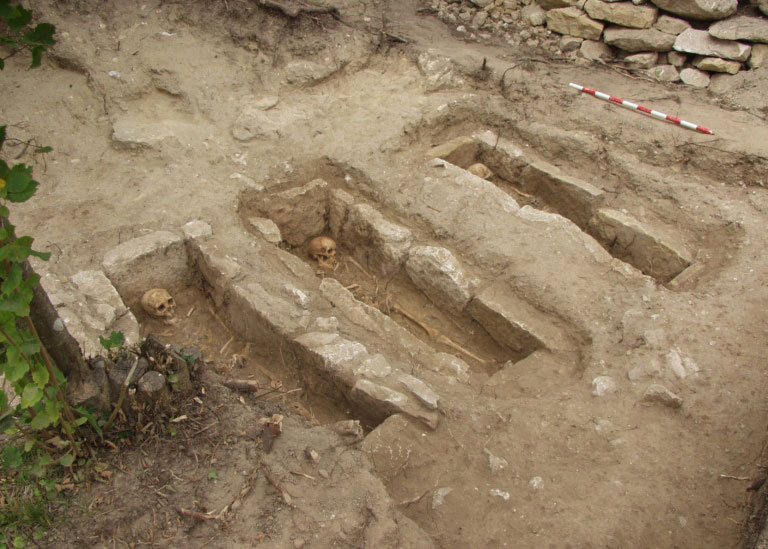
STOCKHOLM, SWEDEN—According to a statement released by Stockholm University, Anders Götherström and Ricardo Rodríguez Varela of the Centre for Palaeogenetics in Stockholm and their colleagues analyzed the remains of 39 individuals buried at Las Gobas, a village site in northern Spain that was occupied from the mid-sixth century to the eleventh century A.D. Some of the remains showed signs of wounds thought to have been inflicted by swords. The village, which was located to the north of regions under Islamic rule, featured dwellings carved into caves and a Christian church. “Our findings indicate that this community stayed relatively isolated for at least five centuries,” Rodríguez Varela said. Genetic study of the remains found low levels of mixing with peoples of North African and Middle Eastern ancestry when compared to other medieval inhabitants of the Iberian Peninsula, he explained. The study also revealed the presence of a bacteria likely transmitted through the keeping of domesticated animals, while an individual from one of the more recent burials had been infected with the variola virus, which causes smallpox. This strain of virus was found to be similar to strains discovered in Scandinavia, Germany, and Russia, suggesting that the virus spread to Spain via a European route. Read the original scholarly article about this research in Science Advances. For more on advancements in archaeogenetics, go to "Ancient DNA Revolution."

